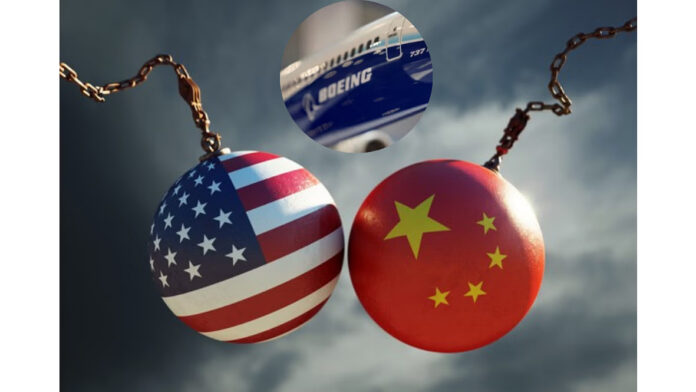Aviation turns political as China puts Boeing in a holding pattern and rivals on the runway.
In a bombshell decision following the U.S.-China tariff row, the Chinese government responded in a tit-for-tat style by instructing its top three airlines to suspend the acceptance of American planes manufactured by Boeing. The directive also halted the procurement of parts and equipment from U.S. suppliers.
China’s top three airlines — Air China, China Eastern, and China Southern — have orders for 179 Boeing planes scheduled between 2025 and 2027. There was a previous firm order of more than 300 jets placed years ago, but soured relations between the two economic giants had already put those deliveries on hold. Currently, more than 85 Boeing 737 Max planes bearing Chinese airline liveries are waiting in Seattle for delivery. Over 250 planes in Boeing’s inventory were planned for delivery in 2024.
President Trump kicked off his second term with an onslaught of executive orders that stunned the globe. Most of these were aimed at American institutions with little global consequence, while a few others antagonized America’s major trading partners. China was a prime target, receiving no reprieve unlike other nations. Tariffs on China were steep, ranging from 125 to 145 percent, applied with immediate effect. Beijing swiftly retaliated with a 125 percent tariff on American imports. Trump called the Chinese action a reneging on commitment, while the Chinese president refused to back down from their principled stance and demanded that America show respect.
This escalation threatens a substantial blow to Boeing, as China is the largest operator of American aircraft and a major source of revenue for the company.
Simultaneously, this move will benefit Boeing’s European rival, Airbus. It will also open new opportunities for China’s domestic aircraft manufacturer, COMAC, to claim a share of the market held by Boeing 737 and Airbus A320 with its C919. The C919 already has more than 1,000 orders from local airlines, as well as from Indonesia, Cambodia, and Kazakhstan.
China is the world’s largest market for airplanes. According to Boeing’s analysis, Chinese airlines are expected to purchase nearly 8,000 planes over the next 20 years.
More than 10,000 Boeing planes are currently flying around the world, with many of their parts and assemblies manufactured in China. This interwoven supply chain reflects a mutual dependence that neither party can sever without serious consequences. The global aviation industry is watching this intensifying trade conflict between the two leading economies with caution.
Boeing estimates that China will account for at least 20 percent of global aircraft demand over the next two decades. This means that both China and Boeing are, to some extent, tied to each other for the foreseeable future. For China, this is a matter of national pride and prestige. For the United States, following a hardline approach could backfire, leading to a volatile or potentially plummeting financial markets – a risk the Trump administration cannot afford to overlook.
Hubris vs. Interests
The corporate world counts on these two leading trillion-dollar economies. Mr. Xi Jinping and Donald Trump appear to be enjoying this mind game of supremacy, and neither side seems willing to back down from their demands.
China needs planes to keep its airline industry afloat, and Boeing needs China to maintain its global edge. Observers believe that a prolonged diplomatic gridlock could have detrimental effects on the global economic balance. Air travel has skyrocketed post-COVID-19, and airlines are in desperate need of new aircraft.
Mr. Eddy Pieniazek, head of advisory at Ishka, an aviation consultancy firm, captured the essence of the situation:
“There are lots of incentives for everyone to do a deal here, and a lot of it is just down to timing.”
The global aviation sector is a microcosm of the broader geopolitical reality: As the U.S. and China engage in a high-stakes tug-of-war, the real cost may be the long-term stability of the industries that define their competitive edge. In the end, the inability to balance national interests with the demands of a rapidly evolving global economy could result in a scenario where both sides emerge weaker than when they started, outpaced by rivals who have adapted more swiftly to the changing environment.




